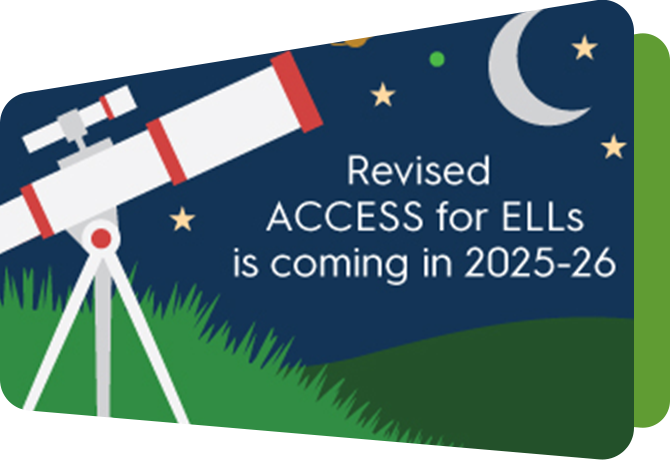Understanding What Students Can Do
WIDA's asset-based approach to each student
The WIDA Can Do Philosophy reflects the foundational belief that everyone has valuable resources they can use to support their own and others’ learning. Linguistically and culturally diverse learners, in particular, bring a unique set of assets that enrich any learning community.
Multilingual learners come with knowledge and skills in multiple languages. With appropriate scaffolding, these assets can become a robust foundation for content-area learning and language development. By exploring and focusing on what language learners can do, educators can engage learners of any language proficiency in meaningful learning that meets standards-based instructional goals.
WIDA believes that multilingual students enrich not only the classrooms in which they learn but also their school, districts, and the nation. WIDA strives to promote the Can Do Philosophy in its work with a wide range of stakeholders: from classroom teachers to national policy makers.

WIDA's Can Do Philosophy
Working with multiple education partners, WIDA developed the Can Do Philosophy – an approach that transforms the conversation from what learners can’t do to what they can do. By shifting from a focus on deficits to a focus on assets, together we send a powerful message: that multilingual learners and their families enrich our PreK – 12 schools.
Watch the brief video below for an overview of our philosophy,
then read The WIDA Can Do Philosophy to learn more about multilingual learners' assets, contributions and potential.
- Video Transcript
The can-do philosophy permeates everything that we do at WIDA. Assessment, professional learning, standards. And bringing content and language together is always, always to build upon the assets that children have.
With anything that we do at WIDA, we're constantly thinking about how we can honor and not just celebrate. But really use the assets that children are bringing to the classroom.
Culturally, linguistic, cognitive, and academic. Kids come into our classrooms with many ways of knowing, many ways of learning. And many different experiences that can enrich what we're already doing.
Teachers bring to the classroom a lot of experiences also. And a lot of ways of knowing and doing things that also benefit the classroom.
Our can-do philosophy has many tools built around it. To help you understand and create language-rich, literacy-rich, and culturally appropriate classrooms. And it turns out those classrooms are good for all kids. They're engaging classrooms that work for every learner in your school. But they're particularly important for English language learners. Who need to learn English, but they also have to keep up with rigorous academic content.
We want to make sure that indeed, this can-do philosophy is very much a part of the educational fabric and is infused in everything we do. And you do.
Our can-do philosophy really exemplifies who we are as educators. And how our multilingual learners are indeed a tremendous resource. How their contributions, not only to teaching and learning, but to our educational communities. And to the world.

Featured Educator
“I truly believe there is more than one way to assess my students’ progress... The WIDA Can Do Descriptors and rubrics are posted around my room and the students have a 'can do' checklist so they can take responsibility for their learning.”
Barbara Smith, ESL Teacher
Waynesville, MO
Related Pages

Tips on using WIDA English and Spanish Language Development Standards for planning and lesson delivery.

Understand what multilingual learners can do at various stages of language development.





